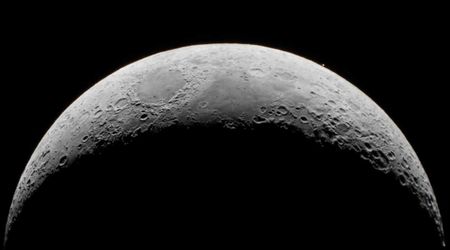Blue Origin shares fascinating details about ‘transporter’ vehicle for its Blue Moon lunar lander

Senior vice president of lunar permanence at Blue Origin, John Couluris, shared illustrations of the "transporter" vehicle, an Artemis lunar lander, at the meeting of the Lunar Surface Innovation Consortium on May 19, 2025. The vehicle will support the company’s Blue Moon Mark 2 lander as part of the Artemis project, according to Space News. The company neared the date of its launch for a smaller lander since its $3.4 billion contract to build Blue Moon Mark 2 for the Human Landing System (HLS) program. The transporter was originally not to be developed by Blue Origin itself.

The initial construction was bestowed upon companies that were part of the Blue Origin-led “National Team.” The vehicle will be responsible for gathering liquid hydrogen and liquid oxygen propellant in Earth’s orbit. It will be transported to a near-rectilinear halo orbit around the moon and transfer the propellants to the Blue Moon lander to conduct a lunar landing. A New Glenn rocket will carry the transporter to low Earth orbit and will be fueled using propellant excess from New Glenn’s upper stages, though the number of refuelings needed is unclear.
At the LSIC meeting this morning, Blue Origin released this new illustration of the transporter vehicle that will be used to transport propellants for the Blue Moon Mk2 HLS lander. Design has evolved since winning the HLS award 2 years ago, says Blue's John Couluris. pic.twitter.com/h22L84CMGz
— Jeff Foust (@jeff_foust) May 20, 2025
“Instead of doing bespoke tanks for individual vehicles, it’s using the same assembly line,” said Couluris, noting that it will use seven-meter-diameter tanks as the upper stage. The technology of “zero-boiloff” is significant in curtailing the loss of cryogenic propellants. The company is stepping forward in handling the technology and maintaining liquid hydrogen at 20 kelvins and liquid oxygen at 90 kelvins. Blue Origin also worked with NASA to integrate its prototype with a thermal vacuum chamber to help thoroughly hold “hydrogen and oxygen as storable propellants.”

The ability to store liquid hydrogen and liquid oxygen for longer would be a big step. This combination of propellants performed the best for major chemical propulsion systems and could be sourced from water on the moon or other bodies in space. “By December, we’ll start our flight units,” stated Couluris, per Space News. The transporter can carry around 100 metric tons from Earth orbit to lunar orbit. “This vehicle, with minimal changes, mainly on comms, can bring up to 30 metric tons to Martian orbit. It can open up the asteroid belt. This opens up the solar system,” he added.
Sounds like we will see Blue Moon Mk1 in 6 weeks and a launch sometime this year, it's looking like Blue Origin might beat SpaceX to the Moon👀👀 pic.twitter.com/k645itwWMx
— Truthful🛰️ (@Truthful_ast) May 21, 2025
The meeting did not dive into any particular schedules to test the transporter or the Blue Moon Mark 2 lander. However, a separate panel with Jacki Cortese, a senior director of Civil Space at Blue Origin, revealed the company’s plans. They expected to conduct a crewed and uncrewed test landing of Blue Moon Mark 2 within the decade. The Blue Moon Mark 1 robotic lander will place up to 3 metric tons on the lunar surface and uses some of the same technology as the Mark 2 lander, which includes the BE-7 engine.

Couluris confirmed its first flight this year as NASA’s Commercial Lunar Payload Services (CLPS) program sent a task order last year to fly a camera payload on this mission. “This (Mark 1) will land this year on the south pole of the moon,” he said. “The vehicle is getting ready to ship out of our factory in about six weeks. We should be launching a few months after that,” he added. After being assembled in a Florida facility, it will also undergo thermal tests while backup hardware is being prepared in case the first launch goes awry, to learn from the mistakes.









